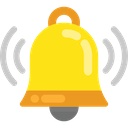moremonkey
Senior Member
Offline
Spring finally arrived in New England so I took the 100 out for its first real drive of the year.
This year the overdrive has a curious problem - even with the selector switch in Normal, the unit will shift into overdrive as soon as it is able. (The centrifugal switch on my car, like so many others, is not connected because it does not work.)
With the dash selector-switch in Overdrive the unit stays in overdrive as intended. It shifts crisply into overdrive when I flip the switch from Normal to Overdrive. But regardless of whether the dash switch is flipped or not, the unit will shift into overdrive as soon as the car is moving at a decent clip (enough pressure in the system?) and I'm off the gas a little bit. If I stay on the gas, the transmission stays out of overdrive.
If I am moving slowly, say 15 to 25 mph or so, I can hear the solenoid clicking as it tries to shift into overdrive. I think once there's enough pressure in the system, it shifts. The unit does not stay in overdrive if I employ the kick down option. And it drops out of overdrive when I am in neutral if I wiggle the gearshift to toggle the first gear switch that always kicks the solenoid off.
So, any thoughts about where to look first?
-Jonathan
This year the overdrive has a curious problem - even with the selector switch in Normal, the unit will shift into overdrive as soon as it is able. (The centrifugal switch on my car, like so many others, is not connected because it does not work.)
With the dash selector-switch in Overdrive the unit stays in overdrive as intended. It shifts crisply into overdrive when I flip the switch from Normal to Overdrive. But regardless of whether the dash switch is flipped or not, the unit will shift into overdrive as soon as the car is moving at a decent clip (enough pressure in the system?) and I'm off the gas a little bit. If I stay on the gas, the transmission stays out of overdrive.
If I am moving slowly, say 15 to 25 mph or so, I can hear the solenoid clicking as it tries to shift into overdrive. I think once there's enough pressure in the system, it shifts. The unit does not stay in overdrive if I employ the kick down option. And it drops out of overdrive when I am in neutral if I wiggle the gearshift to toggle the first gear switch that always kicks the solenoid off.
So, any thoughts about where to look first?
-Jonathan

 Hi Guest!
Hi Guest!
 smilie in place of the real @
smilie in place of the real @
 Pretty Please - add it to our Events forum(s) and add to the calendar! >>
Pretty Please - add it to our Events forum(s) and add to the calendar! >> 
 £70 plus including the dreaded VAT obtained me a new one from Bill Rawles and solved the problem.
£70 plus including the dreaded VAT obtained me a new one from Bill Rawles and solved the problem.